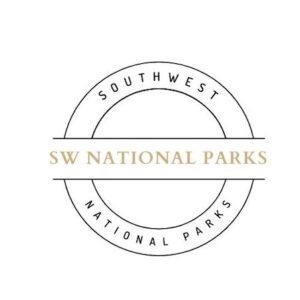15 Things to do when you Visit Zion in January
Zion January: Thinking about visiting Zion National Park in January and wondering if it will be too cold or if you won’t be able to explore? Well, I’m here to tell you that visiting Zion in January is one of the best times to visit the park.
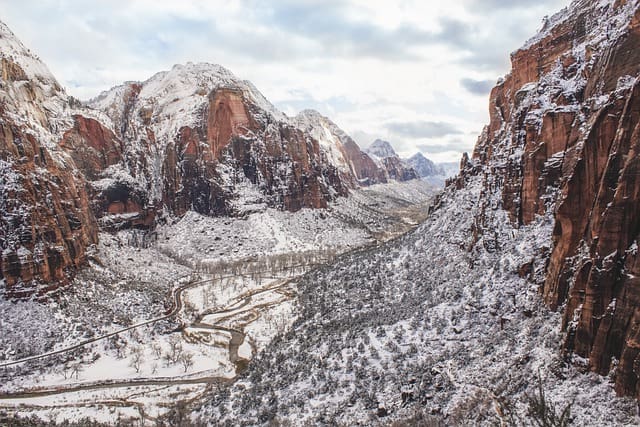
Zion has a fairly temperate climate so of course, it will be cool and there is always a chance it could snow, but overall you will find that if you dress in layers you will enjoy yourself in the winter months.
Wintertime at Zion National Park can be a beautiful experience. Zion is frequently a place of tranquility and beauty in the winter months, with fewer visitors, calmer paths, and less expensive lodging. The trade-off is cooler temperatures and the prospect of weather-related trail closures.
The lack of crowds is the major advantage of visiting Zion in January. As there are fewer people in the park, you can appreciate the size of the walls without being surrounded by thousands of others. In Zion, winter is a time of tranquility and solitude.
The Zion Park shuttle does not operate during winter. People are allowed to drive their cars into Zion Canyon, seeing the majestic scenery from the comfort of their vehicle or stopping at convenient parking areas and taking short hikes to nearby attractions.
Another advantage of visiting in January is that you can drive your car through the canyon. From November to March, personal cars are permitted to go in Zion Canyon. Being able to drive yourself gives you the freedom to see what you want to see, on your watch.

The scenery in January is stunning. Although the snow on the walls and formations at higher elevations may melt as the day passes, there is nothing like sunrise photography in Zion during the winter months.
Visiting Zion National Park in January allows you to take in the fresh, crisp winter air, see amazing scenery blanketed in snow, and have plenty of space to appreciate it all. If you can visit Zion in January, you will have an unforgettable experience and gain a new respect for the park’s beauty and serenity.
Things to do in Zion in January
Drive the Scenic Drive Zion Canyon
The Zion Canyon Scenic Drive is closed to private vehicles throughout the summer. The canyon drive is only accessible by a shuttle bus from April to November. Only in the winter can you drive your car, or if you have a camper van or your private vehicle, around the canyon on your own time to see all the sights and hikes.
The picturesque route, which travels along the Virgin River, offers breathtaking views of the canyon and the iconic Zion rock formations. Make sure to take short treks and photos at authorized spots along the way.
Although this route is available all year, private vehicles are only permitted to use it during the winter. When you visit in the winter, you have the luxury of taking your time along this road. You may either drive straight through appreciating the beauty from the comfort of your car, or you can take advantage of every opportunity to get out of the car and brave the cold to be in nature.
Hike along the Riverside Trail
You’ll find the Temple of Sinawava at the end of the 15-mile Zion Canyon Scenic Drive. The Riverside Trail, which follows the Virgin River from the base of steep sandstone cliffs, is an easy paved walk that follows the Virgin River. The popular Narrows slot canyon trek can be reached via a 1-mile level trail in the canyon bottom. Because it necessitates wading through the river in the winter, the Narrows can only be hiked wearing a dry suit.
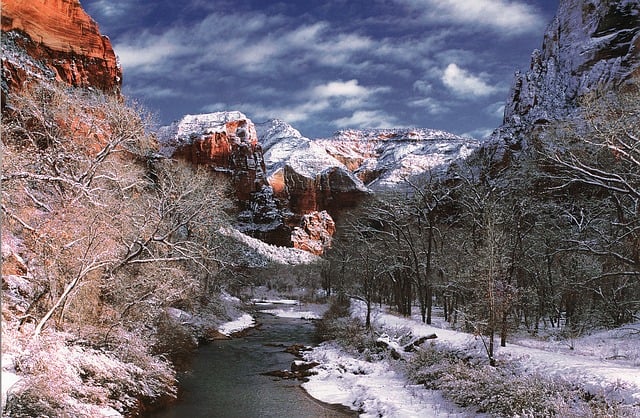
There are several points along the trail where you can access the river, and there are portions where you can walk along the river’s bank on little trails. Other times, the trail is obstructed by rock walls. Don’t forget to look up at the canyon’s walls. The weeping sandstone walls are clothed with hanging gardens of ferns and cactus. Icicle gardens can be found throughout the winter.
Angel’s Landing
Angels Landing is a small, steep fin that juts out into Zion Canyon and is one of the park’s most popular hikes. It’s also been called the world’s toughest hike. In the winter, freezing conditions can make this walk extremely treacherous.
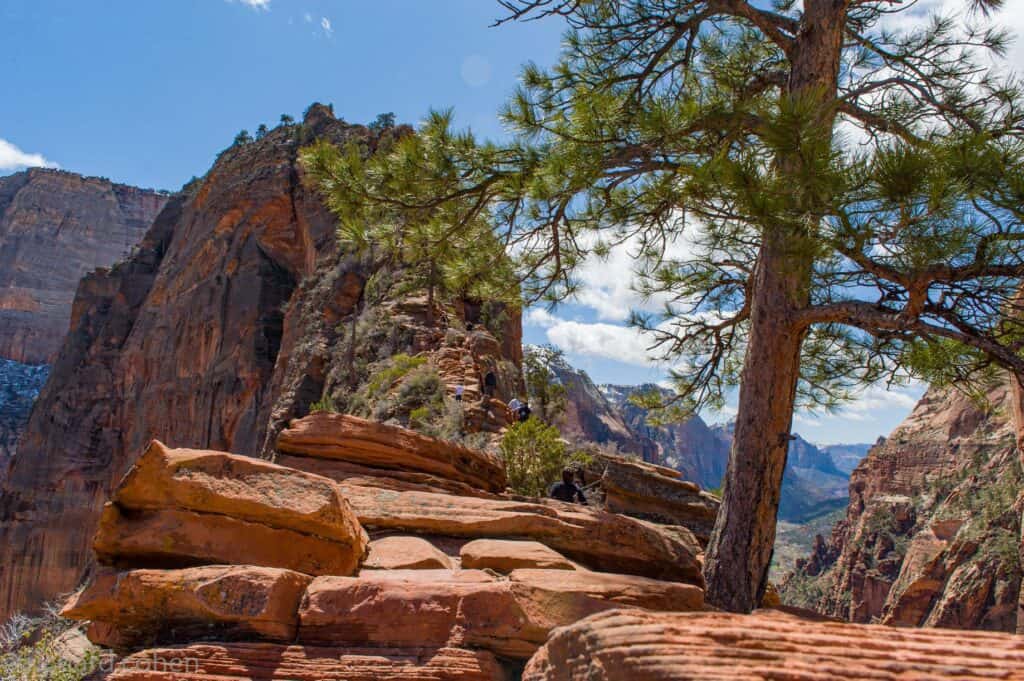
The Grotto Trailhead is the starting point for the hike. From the moment you step out of the gate, the trail begins to climb. The ascent begins gradually and then accelerates. The trail is practically carved into the stone of the rock wall in certain spots, yet this isn’t even close to the most frightening portion of the trek.
You could get warm on the climb, but when you reach Refrigerator Canyon, a hanging slot canyon high above the valley floor, you’ll want to lose your clothing. Although this section of the trail is rather flat, the sky above you is only a sliver between the high canyon walls.
If you do decide to attempt Angels Landing, it will be well worth your time. You’ll be rewarded with a one-of-a-kind 360-degree vista of the valleys below after you reach the summit. However, getting to this position hasn’t been easy. This journey leads people up the side of a mountain with some challenging heights and small paths.
If you wish to pull over and regain your breath while watching other people go by, there are various locations appropriate for resting. This hike can be scary if you have no prior mountain climbing or exposed hiking expertise.
This trail may be temporarily closed or deemed too risky during the winter due to its difficulties. So, make a point of stopping by the visitor center to double-check.
Drive through the Mt Carmel Tunnel
Although this isn’t a particularly scenic or photogenic location in Zion, driving right through a mountain is still rather cool. The Zion-Mt. Carmel Highway runs straight through a sandstone mountain for 1.1 miles. The tunnel is reached via a series of massive curving switchbacks, including pull-outs where you may overlook the Great Arch of Zion.
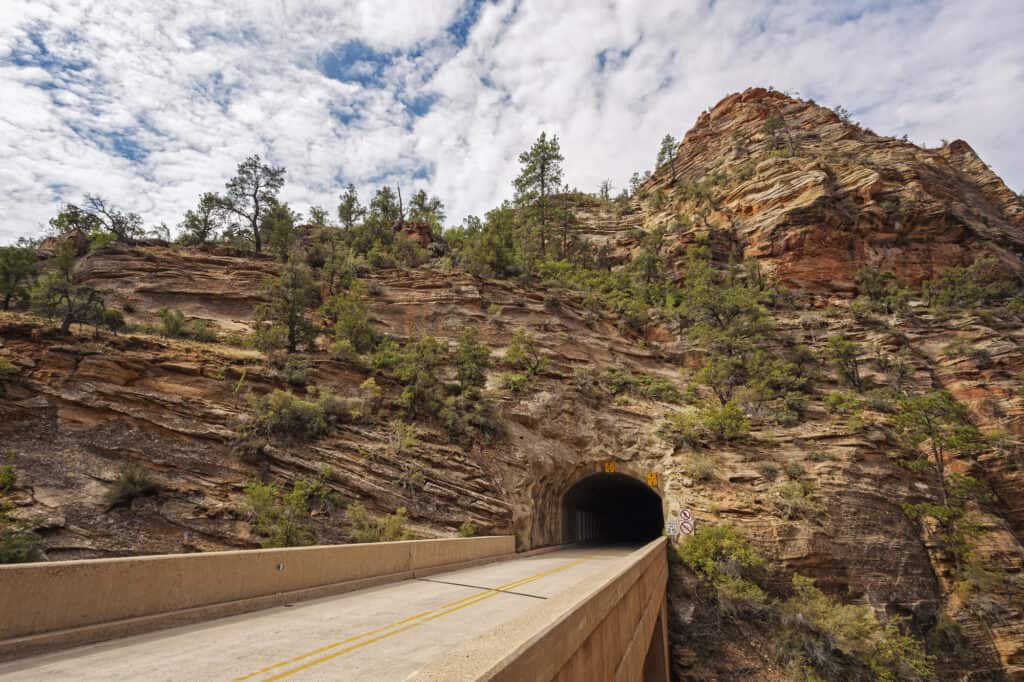
From the South Entrance of Zion National Park to the Mount Carmel Junction with US Route 89, the entire Zion-Mount Carmel Highway is 40 square miles. It was constructed in 1930 to provide better access to the park and to connect visitors to Bryce Canyon, the Grand Canyon, and Zion National Park.
As it climbs up the mountainside, the road follows the cliff wall. The road runs via a narrow 1.1-mile tunnel after a steady climb. Because the tunnel is too narrow for RVs to pass through, traffic is diverted in one way when RVs enter the tunnel. To pass through the tunnel, RV drivers must pay a fee when they enter the park, and a pass must be obtained ahead of time.
Immediately after exiting the tunnel on the east side is the parking area for the Canyon Overlook Trail, a one-mile round-trip hike to an incredible viewpoint over the valley. The terrain transforms to undulating ridged mountains of orange and cream colors beyond this point.
Swirling, otherworldly rock formations, mounds, towers, hoodoos, and hilltops are among the highlights. The terrain, which is speckled with desert pines, sagebrush, and wildflowers, is colored by layered strata of rusty red, orange, cream, yellow, and brown. Water, wind, and ice have molded this environment into the magnificent scene it is today over millions of years
Visit Kolob Canyon
During the winter months, Please be aware that the Kolob Canyons Road may be closed due to snow or ice. Pedestrians are not permitted to walk on the road while snowplows are in operation.
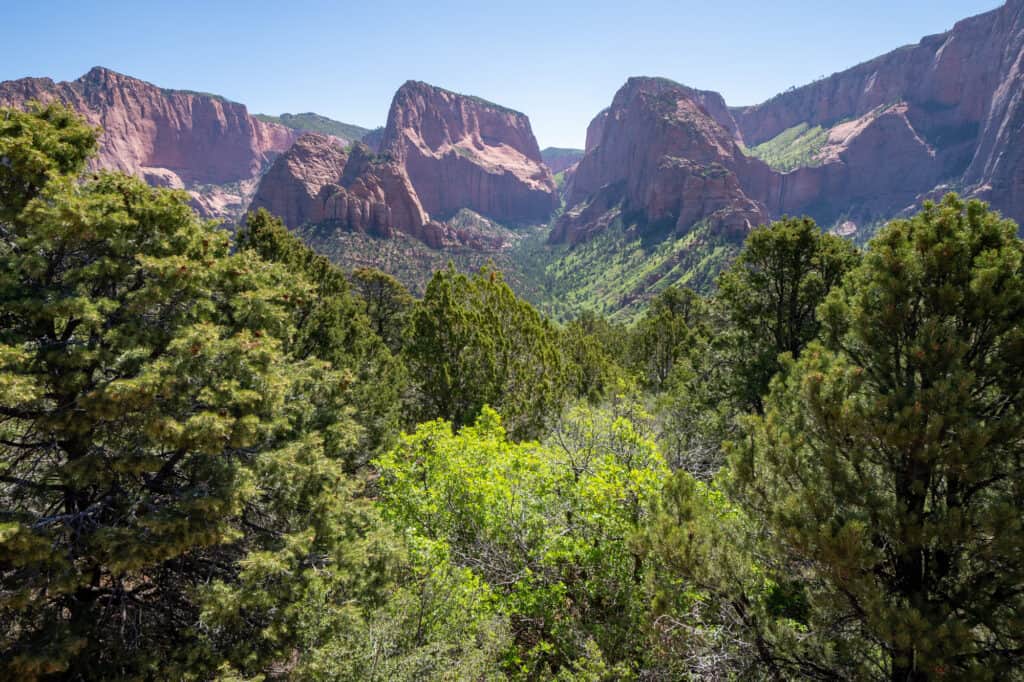
Kolob Canyon is also home to a diverse range of plant and animal species, which are especially noticeable during the winter months. In this portion of the park, there is also a visitor center with all the information you’ll need about exploring Kolob Canyon.
Cliffs, Navajo sandstone canyons, deep canyons, and much more can be found at the Kolob Canyons. This portion of Zion National Park isn’t the most popular or well-known, but that doesn’t change the fact that it’s gorgeous, with so many little gems waiting to be discovered.
Exit 40 on Interstate 15 leads to the Kolob Canyons part of Zion National Park, which is 40 miles north of Zion Canyon and 17 miles south of Cedar City. Visitors may explore the crimson canyons and access different trails and gorgeous overlooks along the Kolob Canyons Road, which is a five-mile scenic drive.
Hike Canyon Overlook Trail
The Canyon View Trail is one of the most popular in Zion National Park, taking you to a spectacular overlook of Zion Canyon in just half an hour each way on a pleasant walk.

If you want a view of Zion Canyon without having to travel a long distance, the Canyon Overlook Trail is the trail for you. The route starts about east of the Zion-Mt. Carmel Tunnel and leads west to an overview of Zion Canyon atop the Great Arch of Zion (though you can’t see it from there). It’s one of the park’s few constructed hiking pathways in the eastern reaches.
The trail is well-kept and guarded in sections where there are high drop-offs — just don’t look down if you’re afraid of heights! Some of the paths are carved into the sandstone, while another traverses a small cave, adding to the pleasure of this short hike!
The trek comes to an end at a breathtaking vista with Zion Canyon stretching out in front of you. You can see the road leading up to the Zion-Mount Carmel tunnel and the canyon’s sandstone formations against the sky if you look closely.
The trail takes you through a series of slick rock layers. The carved Pine Creek Slot Canyon is below you and you might see individuals canyoneering through the dark and winding canyon if you look closely. The route is merely a succession of wooden plank walkways installed beneath overhanging cliffs in certain places where the sandstone drops away.
The trail is just as much of a fascination as the final destination of the vantage point. The trail is bordered on one side by mountain cliff walls, and on the other by a massive drop, mainly secured by railings and barriers that overlook the park’s grandeur.
Hike the Watchman Trail
The trail begins between the Visitor Center and the South Campground and leads to a viewpoint 300 feet above the canyon floor on top of the first tier of cliffs. The trail does not lead to the summit of Watchman Mountain, but it does afford a nice perspective of the famous and majestic peak to the south, as well as a bird’s eye view of the entire Visitor Center complex below.
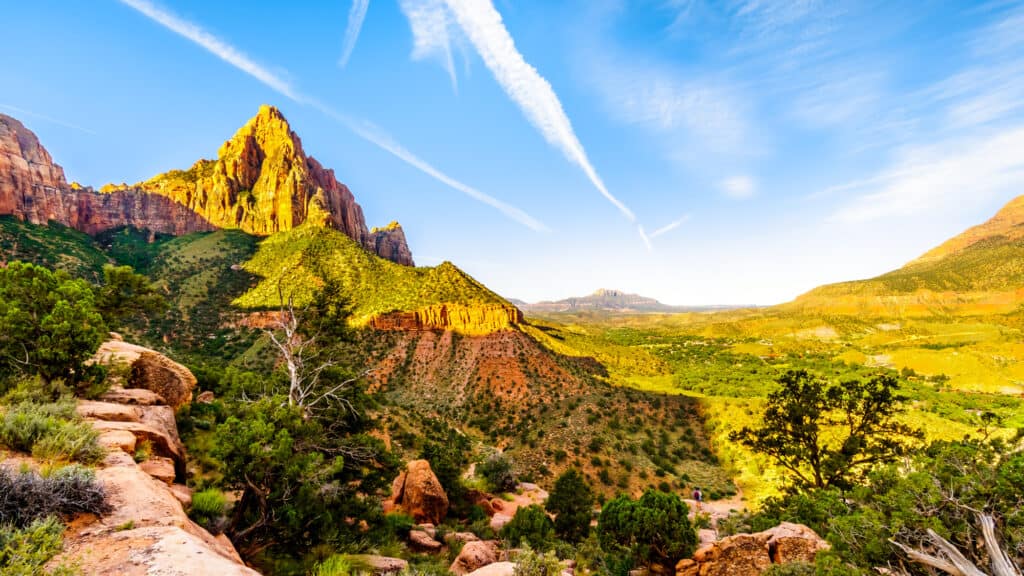
This trail begins inconspicuously, skirting the river’s banks before heading behind some cottages and building debris.
The next mile is moderately difficult, as it ascends and circles a small valley before reaching the first tier of cliffs above the main canyon.
The Watchman Trail is a 5.0 kilometer heavily trafficked out and back trail located near Springdale, Utah that features a river and is rated as moderate. The trail is open all year and is generally utilized for hiking, walking, running, and camping.
Hike Observation Trail
Observation Point is a Navajo Sandstone formation in Washington County, Utah’s Zion National Park. After an 8-mile hike, visitors can reach Observation Point, a jaw-dropping pinnacle 6508 feet above sea level near the Canyon’s northern tip.
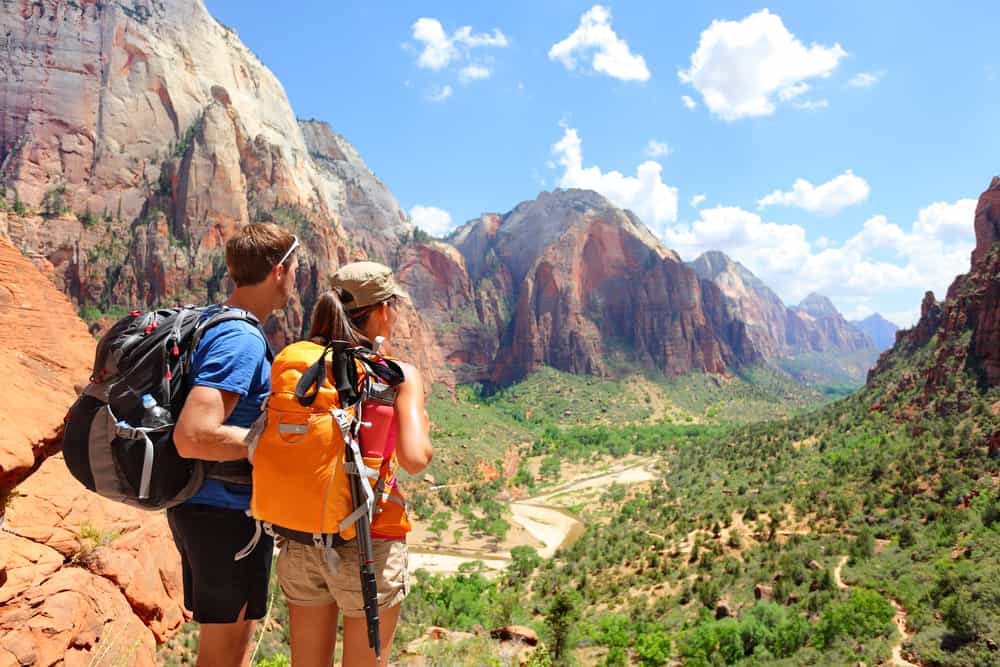
The trail begins with a long, steep ascent and ends with beautiful views for pretty much the entire journey. The summit is higher and less crowded than nearby Angel’s Landing.
This hike starts at a small parking lot that also serves as the trailhead for two other trails: the extremely easy Weeping Rock Nature Trail and the short but adventurous Hidden Canyon Trail.
Observation Point offers a wonderful view. From this vantage point, Zion seems like a vast, dissected plateau. There are substantially fewer people, resulting in a quieter experience, because the vista is not as intimate as it is from Angels Landing, and the effort is significantly greater.
Observation Point is also reachable through the East Mesa Trail, which is located on the park’s East Side and is about an hour’s drive from Springdale. Since it starts on top of the plateau, this variation is about the same distance but saves you 2000 feet in elevation gain.
Hike the Narrows
The Narrows hike in Zion National Park is the most popular and one of the world’s best slot canyon hikes. It’s a lot of fun, and it can be adjusted to meet any skill level. The route is located close to the Virgin River.
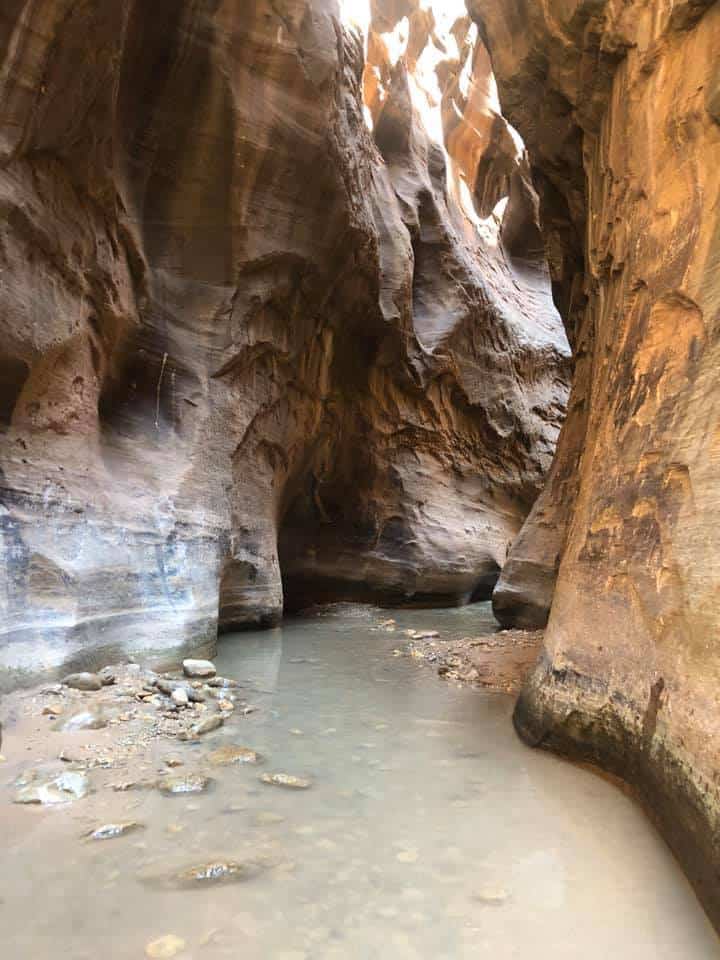
The Virgin River must be crossed while hiking through The Narrows. You must get your feet wet because there is no trail. The majority of hikers begin their journey from the Riverside Walk of the Temple of Sinawava, then proceed upstream before turning around and returning to the Temple of Sinawava.
Despite its challenges, the canyon provides stunning views and is a once-in-a-lifetime experience for everyone who takes on the challenge. There are several routes to complete the trail. Start at the bottom and work your way up as far as you can before turning around and heading back down. Alternatively, you can start at the top and work your way down to finish the adventure. Since this full path requires a permit, the alternate path is the more popular trail.
This trail may be temporarily closed or deemed too risky during the winter due to its difficulties. So, make a point of stopping by the visitor center to double-check.
Recent Posts
15 Tips for Visiting the Grand Canyon in September – 2023 Ultimate Guide
Visiting the Grand Canyon in September is a great time to visit. September is a busy time to visit but the crowds are starting to arrive especially toward the end of the month. I’ve included...
15 Tips for Visiting the Grand Canyon in August – 2023 Ultimate Guide
Visiting the Grand Canyon in August is a great time to visit. August is a busy time to visit but the crowds are starting to arrive especially toward the end of the month. I’ve included all...
